- Home
- Michael Chabon
Fight of the Century Page 6
Fight of the Century Read online
Page 6
* * *
Do we accept this kind of racism because it is so pervasive, or too minor to make a big deal about, or because we don’t want to lose our job or personal relationships over it? It’s painful and awkward whether we act on it or don’t, but not acting is condoning it.
All Fred Korematsu wanted was to walk down the street with his girlfriend. My father just wanted to be seated at a restaurant. I want people to stop asking me where I’m from (Venice, California). And my fifteen-year-old daughter wants her life’s choices to be determined by who she is and what she’s capable of, not what box she checks off. We can make things better. Just make sure you bring plenty of nails.
HANNEGAN V. ESQUIRE (1946) (amicus)
In 1943, Frank Walker, the postmaster general of the United States, appalled by the pinup girl photos being circulated in Esquire and similar magazines, convened a hearing to seek public comment on whether these images were obscene. The committee in charge of deciding this question determined they were not. Undeterred in his quest to censor the magazine, the postmaster general terminated Esquire’s second-class mailing privileges. Esquire sued, arguing that at stake in the postmaster general’s unilateral decision were fundamental questions—questions of the freedom to think for oneself, to consume media of one’s choosing, and fundamentally to be free from arbitrary censorship. The Supreme Court found in the magazine’s favor, ruling that the postmaster’s personal tastes could not serve as the arbiter of obscenity. The Court wrote, ruling that “a requirement that literature or art conform to some norm prescribed by an official smacks of an ideology foreign to our system.… It would sanction withdrawal of the second-class rate tomorrow from another periodical whose social or economic views seemed harmful to another official.” This degree of tyranny, the Court concluded, could not stand in a free society. The opinion stands as an emblem of the freedom of thought and media, and freedom from government censorship of content, that defines American First Amendment jurisprudence.
A Short Essay About Shorts
DANIEL HANDLER
In 1943, when it might strike you that there were better things to worry about, the United States postmaster general decided Esquire magazine was obscene. The ACLU disagreed, and after a media circus of a hearing, it prevailed. This case is one of many important ones in the cause of free expression, and the ACLU has gone many rounds with censorious scolds of every stripe. One article about the case is illustrated with a photograph of two old white guys gazing sternly at a pinup girl painting by Joaquin Alberto Vargas y Chávez, aka a “Vargas Girl.” One of the men is the secretary of the “watchdog of New England’s morals,” and that’s really all you need to know; such idiocy continues and the struggle continues. But what’s really interesting about the case to me is what happened next, and what lesson it might convey. But first I’d like to go back to sixth grade, which is when I learned the lesson for the first time.
I learned about one thing in middle school, which as far as I can tell is pretty standard. It wasn’t that there was nothing to learn in the 1980s in San Francisco, but I was in sixth grade, and almost everything felt like it was happening far away from my big, dilapidated public school in a quiet, foggy residential neighborhood. I was wrong, of course. Every crucial issue that comes to mind from that era and locale—AIDS, homelessness, drug addiction, domestic abuse, police violence, religious prosecution—was careening through the lives of my classmates and teachers, and it wasn’t as if such struggles were at all distant from my own life. But ongoing issues of civil liberties did not feel present in the curriculum I was being fed (the transitive property, ancient Sumeria) or in my own preoccupations (Dungeons and Dragons, my freckly girlfriend). Until the heat wave.
A typical heat wave in San Francisco consists of a surprisingly warm afternoon, one full day of sunshine, and then another warm morning before the fog rolls back in and ends, a weather sequence known outside of San Francisco as “not worth mentioning.” For us, it made for a nice break from the usual sullen gray sky. Some kids got some water balloons going. People shrieked, but it was middle school; somebody’s always shrieking. Our principal got pretty shrieky herself, over the crackly intercom, and announced that henceforth, students would not be allowed to wear shorts. I remember that this seemed like a weird ruling—shorts?—but also that I didn’t care much. I was a young teenager, self-conscious about my body, and besides, the heat wave was only going to last another day and a half.
I didn’t think anything about it until a friend pointed out that our rights were being violated. She had a copy of our Student Rights and Responsibilities—a little pamphlet they’d given us on the first day of school. I hadn’t kept mine, of course, because I didn’t think rights and responsibilities had anything to do with me. They’d gone through them on the first day of school, and I’d vaguely followed along, but I was a geeky white Jewish kid who got straight A’s. I was a good kid. I followed the rules.
Rule followers, though, tend to have an acute sense of injustice. When I saw that one of our rights was, “Students can dress how they choose,” I was outraged in the instantaneous, remorseless way of the sixth grader. I helped everybody else get outraged too, and the next day we all wore shorts in protest. Faced with outrage from the administration, I was immediately ratted out as the ringleader and brought into the principal’s office to argue my case. For many years, it was a badge of honor that I held off from crying until I was back outside in the hallway.
The argument went like you might imagine. The principal talked about water balloons and the mess they cause, puddles on the floor students could slip on, wet clothing making a mess of the classroom chairs. I just kept repeating that students can dress how they choose, that it was one of our rights. I remember she told me how hard it was to be a middle school principal, and that must have been the end of the argument. I left without getting in any official trouble, though I didn’t feel very triumphant crying my way back to class, and everyone felt stupid the next day, when the fog rolled in and everyone was shivering in their shorts. Still, it felt like something of a victory, and we knew there’d be more heat waves in the future.
Our principal, however, was prepared. The next semester we had a new Rights and Responsibilities pamphlet, and the issue of our clothing was moved across the fold, from the right to dress how we chose to the responsibility to dress appropriately. For the next heat wave, my short-pants comrades and I had no bare leg to stand on.
This was, for me, the crucial lesson of middle school and one for the rest of life: that one can protest, fight, and win against injustice, but that those in power will just change the circumstances rather than concede the argument. The ACLU had to follow Hannegan v. Esquire all the way up to the Supreme Court because the postmaster, having failed to convince the right people that Esquire was obscene, revoked the magazine’s second-class mail permit on the grounds that the magazine was morally improper, not for the public welfare. Having failed to be convincing, the postmaster elected to change the argument, starting up three more years of new arguments before a unanimous verdict, from the highest court in the land, finally scuttled this particular attempt at censorship—not that this signaled the end of old guys gazing sternly at something they didn’t like and dreaming up strategies, one after the other, to keep other people from seeing it. They try and they keep trying. They’re tireless and move quick. When we win the argument, they change the subject. When we prevail in court, they change the rules. It is not a fair fight because they keep fixing it, and there’s no lasting victory, just small strikes, toeholds really, against shifting shiftiness. As the ACLU understands, it’s our right, and our responsibility, to do this: to tussle like middle schoolers against our principals and in favor of our principles.
TERMINIELLO V. CITY OF CHICAGO (1949) (amicus)
Terminiello v. City of Chicago demonstrates that defending fundamental rights and liberties is not always pleasant or easy. Terminiello himself was a virulent racist, fascist, and anti-Semite. Yet the
ACLU filed a brief on his behalf, just as it represented American Nazis in National Socialist Party of America v. Skokie and the KKK in Capitol Square Review & Advisory Board v. Pinette. Unflagging defense of liberty characterizes the ACLU’s work, despite the strange circumstances and consequences this sometimes entails.
They Talk Like That
GERALDINE BROOKS
People talk like that. They talk like that. Let’s deal with that.
—Jay-Z
On the facade of the Stadtkirche in the eastern German town of Wittenberg, a thirteenth-century bas-relief of a Judensau, or “Jew’s pig,” shows a rabbi with his hand up the rear end of a sow while members of his congregation suckle her teats. Since the entrance to the former Jewish ghetto lies just beyond, the medieval Jews of Wittenberg were constantly confronted and humiliated by this obscene image. Once common throughout medieval Europe, Wittenberg’s Judensau is one of the last still in its original place. In 1988, to mark the fiftieth anniversary of Kristallnacht, the East German government commissioned a sculpture by the artist Wieland Schmiedel. It’s a simple, eloquent attempt at interpretation and atonement. Set in the ground below the Judensau, it depicts paving stones, heaving, tilted out of place, as a noxious, black poison pulses powerfully from beneath.
When I visited Germany in 2009, I found the dialogue between these two works the most potent of all the numerous Holocaust memorials, museums, and historic sites we toured. The Judensau, on the facade of the very church where Martin Luther preached, was for me the loudest and grossest indictment of anti-Semitism—its entrenchment, acceptance, and official sanction not just under the Nazis but throughout centuries of immiseration. The Schmiedel work, with its understated Maya Lin-esque minimalism, both acknowledged this and addressed the probability that the vileness remains—maybe paved over for a while, but ready to bubble up and spill out into our own carefully curated idea of ourselves as a somehow more evolved and superior generation.
Terminiello v. City of Chicago, in which the ACLU was amicus, brought the Schmiedel work vividly to my mind. Arthur Terminiello, a Catholic priest from Birmingham, Alabama, was convicted of breach of the peace by the Chicago courts following a riotous night during which he whipped up a meeting of the Christian Veterans of America with anti-Semitic slurs and Left-baiting, while an even larger crowd of opponents protested violently outside the auditorium. Glass shattered as bricks flew through windows. Would-be audience members had the clothes torn off their backs as they tried to enter the auditorium. Police had to form a flying wedge to get Terminiello into the hall through the wall of bodies blocking the way and howling “Hitlers,” and “damn fascists.” Attempting to keep order, police dodged ice picks, rocks, and stink bombs.
Struggling to be heard over the roar of the protesters, Terminiello exhorted his “fellow Christians” against the “slimy scum” that he said were “going on to destroy America.” Among these, he singled out “Zionist Jews” and leftists. “We have fifty seven varieties of pinks and reds and pastel shades in this country and all of it can be traced back to the New Deal” and “Queen Eleanor [who] is now one of the world’s communists.” Calling Franco “the savior of what was left of Europe” and excoriating unnamed “non-Christian” American servicemen, doctors, and nurses who, he alleged, had tortured and sterilized and infected Germans with syphilis—“Do you wonder they were persecuted in other countries in the world?”—he concluded by urging his followers not to be like the timid Apostles before the coming of the Holy Ghost: “We must not lock ourselves in an upper room for fear of the Jews.” Chicago’s court fined Terminiello one hundred dollars. He appealed to the Illinois Appellate Court and the Illinois Supreme Court, both of which affirmed his conviction. But the US Supreme Court overturned it.
As I read the Court’s almost sixty-year-old opinion, it wasn’t Terminiello who was on my mind. I found myself thinking instead about a night of flames and shouting in 2017 when a Terminiello-like provocateur, also given to wild and ugly defamations, also left-hating and anti-Semitic (although in this case the Semite victims of his slurs generally are Muslims), faced antifascist rioters at a speech he attempted to deliver on campus at Berkeley.
“A function of free speech under our system of government is to invite dispute,” wrote Justice William O. Douglas for the majority in Terminiello. “The vitality of civil and political institutions in our society depends on free discussion,” he wrote. This right “is therefore one of the chief distinctions that sets us apart from totalitarian regimes. Accordingly, it may indeed best serve its high purpose when it induces a condition of unrest, creates dissatisfaction with conditions as they are, or even stirs people to anger. Speech is often provocative and challenging. It may strike at prejudices and preconceptions and have profound unsettling effects as it presses for acceptance of an idea.” Douglas goes on to assert that this kind of speech is protected “unless shown likely to produce a clear and present danger of a serious substantive evil that rises far above public inconvenience, annoyance, or unrest.” There is, he writes, “no room under our Constitution for a more restrictive view. For the alternative would lead to standardization of ideas either by legislatures, courts, or dominant political or community groups.”
About the same time as hate-speaking exhibitionists bee-lined to Berkeley, hoping to stir up more protests, the town of Wittenberg prepared to celebrate the anniversary of Martin Luther’s Reformation. As it did so, the Internet lit up with petitions seeking removal of the Judensau. Put it in a museum if you must, said the petitions, but take it out of the public square.
But to put it in a museum is to remove it from its potent context. In a museum, we will no longer imagine the daily lives of the Jews who couldn’t go to or come from their homes without passing beneath that hateful image. More dangerous, putting it in a museum consigns it safely to the past. It’s as if to say that all this is over and done with, a relic of a barbarism that no longer exists. It’s to assert that we’re better than that, when the evidence to the contrary is everywhere around us, bubbling up from beneath, just barely paved over.
Yes, the image still causes pain. Today’s alt-right hatemongers cause pain. Terminiello’s words no doubt caused pain. But pain is better than the ineffable, unsustainable fantasy of the anesthetized opium dream.
Our pain, in the end, is what provokes us to seek healing.
BROWN V. BOARD OF EDUCATION OF TOPEKA (1954) (amicus)
Brown is perhaps the most famous case in American legal history. It was the culmination of the long fight of the National Association for the Advancement of Colored People (NAACP) for quality education for blacks and the advent of a longer struggle over what that means.
From the start of public education in the United States, children primarily attended schools segregated by race. Schools for white children received the bulk of state resources, leaving schools for black and other minority students to scrape by on whatever funding they could find. This was true in both the North and South, though the means and reasons differed.
Brown itself is predicated on this divide. Under the 1896 ruling of Plessy v. Ferguson, racial segregation was deemed constitutional so long as blacks’ facilities were equal to those of whites. In Brown, the NAACP argued first that segregation is inherently unequal. Black schools lacked the connections, reputation, and institutional power of white schools. Categorically denying black students those benefits was unacceptable. Furthermore, the NAACP and its allies argued that segregation was a fundamentally subordinating experience for black and brown children, who were relegated to ill-equipped schools. The ACLU joined this argument with a powerful amicus brief, encouraging the Court to abandon Plessy and hold states accountable to their black citizen-students.
Chief Justice Earl Warren, writing for the majority, ruled that segregated schools were a violation of the Fourteenth Amendment’s equal protection clause of the Constitution. The ruling required schools with statutory segregation to integrate their student bodies. It is here that Brown s
tumbles. The Court ordered integration to begin not immediately, but with “all deliberate speed,” which became a license for resistance and retrenchment. What’s more, Brown was narrowly tailored to segregation in schools, leaving the other abuses of Jim Crow untouched.
Rocket City
YAA GYASI
In 1961, President John F. Kennedy delivered a speech in which he declared his commitment to landing a man on the moon before the end of that decade. “There is no strife, no prejudice, no national conflict in outer space as yet.… Its conquest deserves the best of all mankind, and its opportunity for peaceful cooperation may never come again,” he said. “We choose to go to the moon. We choose to go to the moon in this decade and do the other things, not because they are easy, but because they are hard, because that goal will serve to organize and measure the best of our energies and skills, because that challenge is one that we are willing to accept, one we are unwilling to postpone, and one we intend to win.”
It was Kennedy’s first year in office, his first year presiding over a country gripped by racism, a country that was forged in strife, prejudice, and conflict. That year saw the Freedom Rides, the bus burnings and passenger beatings of black people hoping to desegregate transportation. The next year, President Kennedy would send the National Guard and federal troops to the University of Mississippi when riots broke out after James Meredith, the first black student to be admitted to the school, attempted registration. Two people died and dozens were injured. The year after that, 200,000 Americans would march on Washington. But on that day, the day of his famous moon speech, JFK was able to offer a vision of a new world, unsullied, as blank and as innocent as a newborn baby. NASA had received its mandate, and the journey to the moon began.

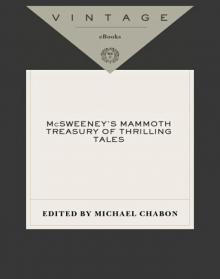 McSweeney's Mammoth Treasury of Thrilling Tales
McSweeney's Mammoth Treasury of Thrilling Tales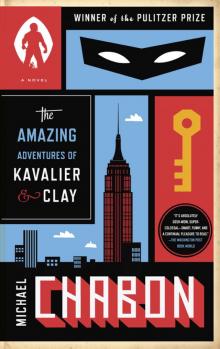 The Amazing Adventures of Kavalier & Clay
The Amazing Adventures of Kavalier & Clay The Yiddish Policemen's Union
The Yiddish Policemen's Union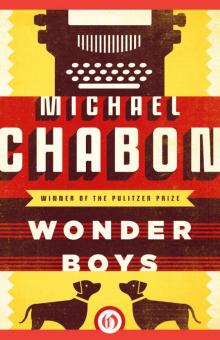 Wonder Boys
Wonder Boys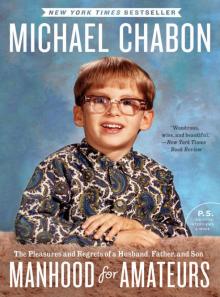 Manhood for Amateurs
Manhood for Amateurs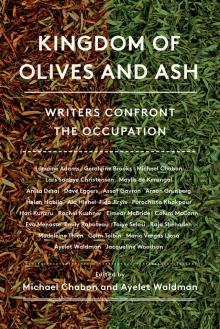 Kingdom of Olives and Ash: Writers Confront the Occupation
Kingdom of Olives and Ash: Writers Confront the Occupation Gentlemen of the Road: A Tale of Adventure
Gentlemen of the Road: A Tale of Adventure A Model World and Other Stories
A Model World and Other Stories Pops: Fatherhood in Pieces
Pops: Fatherhood in Pieces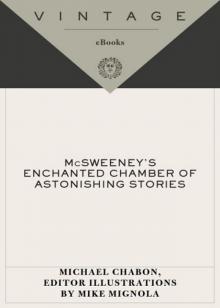 McSweeney's Enchanted Chamber of Astonishing Stories
McSweeney's Enchanted Chamber of Astonishing Stories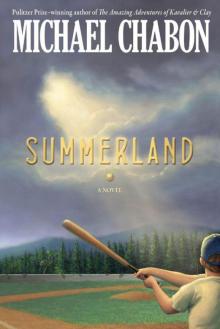 Summerland
Summerland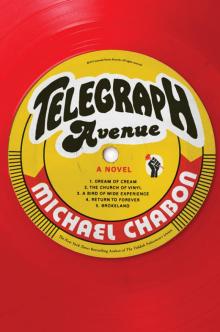 Telegraph Avenue
Telegraph Avenue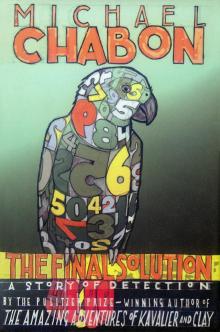 The Final Solution
The Final Solution The Mysteries of Pittsburgh
The Mysteries of Pittsburgh Werewolves in Their Youth
Werewolves in Their Youth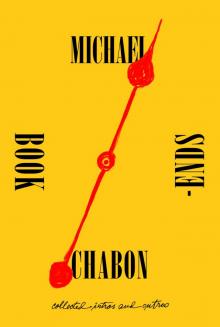 Bookends
Bookends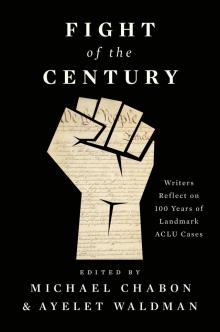 Fight of the Century
Fight of the Century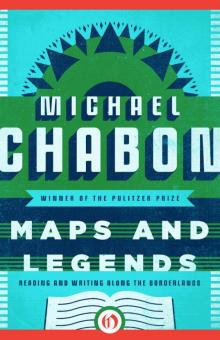 Maps and Legends
Maps and Legends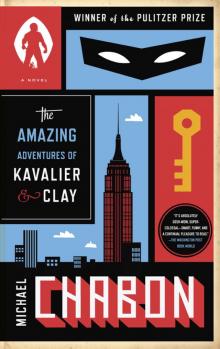 The Amazing Adventures of Kavalier & Clay (with bonus content)
The Amazing Adventures of Kavalier & Clay (with bonus content)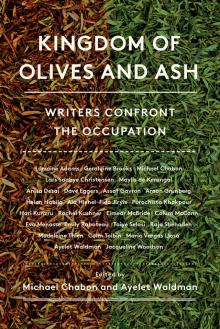 Kingdom of Olives and Ash
Kingdom of Olives and Ash Pops
Pops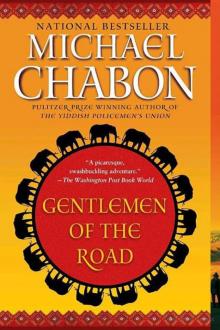 Gentlemen of the Road
Gentlemen of the Road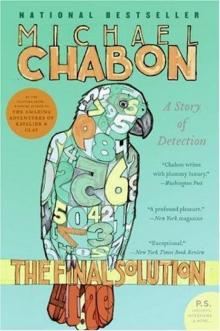 The Final Solution: A Story of Detection
The Final Solution: A Story of Detection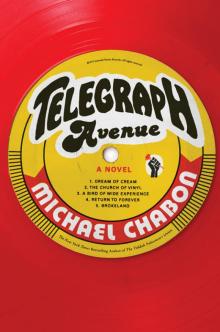 Telegraph Avenue: A Novel
Telegraph Avenue: A Novel